We hope that each of you, our readers, will enjoy and appreciate this article we present about these 4 Magnificent Birds of Mexico. It was certainly our pleasure to gather the information for you. May it provide you with both education and increased awareness.
Certainly, these few species listed herein represent only a portion of the wonders found in this amazing region. It’s our belief, though, that they serve as excellent representations of the wonders found here. Check out some of our other articles for similar marvels.
Bald Eagle

Bald Eagle Facts
- Leading off this article about these 4 Magnificent Birds of Mexico, we present one that might surprise some of you, the Bald Eagle.
- The term used here serves as the common name for an incredibly majestic bird that technically classifies as a sea eagle. This proud and magnificent avian also goes by the very difficult to pronounce scientific name of the Haliaeetus leucocephalus.
- By either name, however, this animal currently remains the only known variety of sea eagle native to the its particular portion of the world. Modern science also currently recognizes two known subspecies of this incredible bird still in existence.
- Somewhat ironically, despite its now quite famous name, the breathtaking animal isn’t actually bald at all. This misconception occurs because the name derives from a much older term. That original term actually means white-headed.
- Most fortunately, the population of the stunning Bald Eagle appears to be both sufficient and stable. That condition also appears to hold true throughout the entirety of its natural range. This fortunate situation was not always the case, however.
- In the past, the breathtaking raptor nearly became extinct, before humans implemented protective measures. Thankfully, though, it now holds the status of Least Concern with the IUCN. The creature still faces the threat of climate change, however.
Bald Eagle Physical Description
Most notably, the gorgeous Bald Eagle displays the physiological characteristic of sexual dimorphism. That remains a characteristic shared by many of its related species, though. In its case, however, this trait presents itself as a matter of size.
That holds true due to the fact that the females of the species average about 25% larger than the males. These physically larger females further weigh as much as 14 lb (6.3 kg). In addition to this, exceptional females sometimes even attain a wingspan of 7.5 ft (2.3 m).
The plumage of the creature also continues to be one of its most striking features. This trait presents as a distinctive combination of dark brown on the body, and white on the head and tail. That combination has served to make it one of the most recognizable birds on earth.
The eyes, beak, and feet of the majestic Bald Eagle further show a bright yellow in color. The powerful talons also develop large and razor-sharp, as with most raptors. Not only that, the Bald Eagle possesses the ability to retract its talons at will, but rarely chooses to do so.
- Kingdom: Animalia
- Phylum: Chordata
- Class: Aves
- Order: Accipitriformes
- Family: Accipitridae
- Genus: Haliaetus
- Species: H. leucocephalus

Bald Eagle Distribution, Habitat, and Ecology
The range of the Bald Eagle remains extensive in nature. The beautiful creature inhabits most of North America. This extends from northern Mexico, to all of the continental United States. It also inhabits temperate portions of Alaska, and most of the country of Canada.
Fortunately, this particular avian has a decided advantage over some competitors. It quickly proved itself to be highly adaptable to a variety of habitat types. Due to this trait, it can, and often does, live in bayous, deciduous forests, and even the Sonoran Desert.
The beautiful animal additionally holds yet another distinction. It generally prefers to build its large nests in the tops of the tallest trees near a body of water. In fact, the amazing avian holds the distinction of building the largest nest of any bird in its range.
In point of fact, these constructions hold a place in the record books. Its constructions remain the largest arboreal nests of any known animal. These may be as much as 13 ft (4 m) deep, 8.2 ft (2.5 m) wide. Quite amazingly, each can also weigh up to 2,000 lb (907 kg).
Much like related species, the fabulous Bald Eagle evolved to feed entirely as a carnivore. It also feeds opportunistically, consuming a wide variety of prey. The majority of the prey of most individuals, though, remains comprised of numerous types of locally available fish.
The awesome bird remains fascinating for one more reason. Individuals of this species also typically mate for life. When the tiny offspring arrive, both parents care for the young, unlike some birds. Finally, this breathtaking bird can live up to 20 years in the wild.
Long-Eared Owl
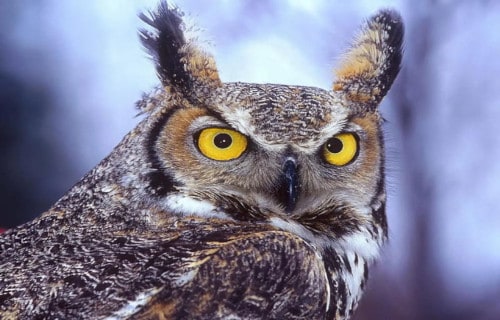
Long-Eared Owl Facts
- Next up in this compendium of 4 Magnificent Birds of Mexico comes the impressively beautiful bird known as the Long-Eared Owl.
- Perhaps most notably, the descriptive term given to it serves as one of the common names for a truly majestic type of raptor. The animal does, however, also possess several other common names. These are used in various parts of its range.
- These alternate common names include several highly descriptive terms. They include such terms as the cat owl, the lesser horned owl, and the northern long-eared owl. This beautiful avian also goes by the scientific name of Asio otus, though.
- This gorgeous creature additionally shares a great portion of its native range with a related avian. That’s the visually quite similar species known as the short-eared owl. The two animal can most easily be distinguished while at rest.
- That’s because, at that time, the ear tufts of the Long Eared Owl become clearly visible. This constitutes the most easily recognizable physical difference between the two. In addition, the eyes of the two different creatures display different colors.
- A total of four recognized subspecies of this remarkable avian currently exist around the world. But, the Long Eared Owl has a decided advantage over many of them. Unlike some of them, this wonderful bird appears to have a sizable and stable population.
- Due to this, the IUCN presently lists it as a Species of Least Concern. This ranking appears on its Red List. It nonetheless must be considered to be facing at least a few threats to its existence. These would include habitat loss and climate change.
Long Eared Owl Physical Description
Firstly, the beautiful Long Eared Owl merits attention for other factors than merely its size. That holds true because the animal develops as an owl of medium physical size. Secondly, it does display a moderate of the characteristic of sexual dimorphism.
Individuals of this animal further attain a respectable body size. Mature specimens average roughly 16 in (40 cm) in total length. Meanwhile, wingspans average about 39 in (100 cm). Adult body weight varies significantly, but averages 15.3 oz (435 g).
The female of the stunning Long Eared Owl also grows larger and heavier than the male. These females also develops as darker in coloring. The prominent ear tufts of both sexes generally develop as black in color, though, and centered on the head.
The prominent feathers of the bird also possess a striking pattern of colors. These usually appear as a light brown in color, with vertical darker stripes present as well. The impressive eyes of this stunning species also typically grow comparatively large.
- Kingdom: Animalia
- Phylum: Chordata
- Class: Aves
- Order: Strigiformes
- Family: Strigidae
- Genus: Asio
- Species: A. otus
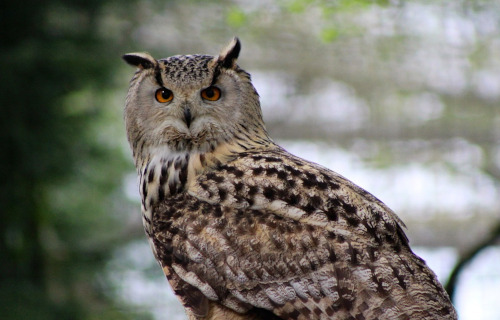
Long Eared Owl Distribution, Habitat, and Ecology
Much like many related species the Long Eared Owl evolved as partially migratory in nature. However, to the surprise of many people, this avian inhabits a relatively broad swathe of the globe. That’s due to the fact that it appears on three separate continents.
More precisely, however, it appears in a total of three separate continents. These consist of the continents of Asia, Europe, and North America. The fascinating animal commonly generally moves southward within its native range during the winter months.
The stunning raptor also has decided preferences for the type of region it chooses for its habitat. This holds true since individuals primarily inhabit forests that developed close to open areas. That further provides a combination of protective cover and good hunting.
Most individuals typically make nests in coniferous trees. Also, breeding occurs between February and July, and clutches average 4-6 eggs. The marvelous Long Eared Owl also shares one particular behavioral characteristic common to all owls.
That’s the fact that it generally hunts at night. Even among its kindred, this animal stands out for its skill as a hunter. The raptor remains renowned for being virtually silent while hunting. Its principal prey consists of a variety of small mammals, rodents, and other birds.
Harpy Eagle
Harpy Eagle Facts
- Next up in this listing of 4 Magnificent Birds of Mexico we present the powerful creation of Nature known as the Harpy Eagle.
- The magnificent bird presently ranks as the largest and most powerful of all known types of eagles living in a rainforest. This huge and truly stunning variety of raptor also ranks as one of the largest species of eagle found anywhere on earth.
- Some confusion does surround the animal, however, in regards to its common name. Some refer to it as the American harpy eagle. This occurs due to the desire to avoid confusing it with another species of eagle inhabiting the same habitat range.
- Quite unfortunately, the IUCN now lists this incredible bird as Near Threatened, on its Red List of Threatened Species. This lamentable fact occurs due to a combination of factors. Chief among these is the ongoing destruction of much of its natural habitat.
- In fact, in parts of the range it previously inhabited, the gorgeous animal has now disappeared entirely. In addition to this, the magnificent bird known as the Harpy Eagle also faces various other threats to its continued existence.
- Even in the regions it still appears in, its numbers appear to be reduced. The fabulous bird also faces the same dire threat as many other species around the world today. This consists of the ongoing threat of climate change, which looms over countless species.
Harpy Eagle Physical Description
The truly stunning Harpy Eagle possesses an extremely visually striking physical appearance. This easily sets it apart from related species. This statement holds true for several reasons. Its sheer physical size only represents one of these factors, however.
But, as remains true of many species, this bird displays the trait of sexual dimorphism. In its case, though, this means that the female of the species reaches a significantly greater size than her male counterpart. Both genders also have the largest talons of any type of eagle.
The female of the marvelous species, usually being the larger of the two, typically attains a maximum body length measuring about 3.5 ft (1.07 m). The smaller male of the species pales in comparison. He rarely exceeds a body length of 2 ft 10 in (86.5 cm).
The impressive females further attain a much greater mass than the males. The body weight of the female achieves an average totaling as much as 18. 3 lb (8.3 kg). Yet the males, however, only reach a maximum known weight of 13.1 lb (5.95 kg), and average much less.
Both genders of the Harpy Eagle do share many characteristics. This includes displaying the same overall physical appearance. The upper portions of the body present dark black feathers. Yet, the underside of the bird remains primarily white in color.
The exception to this tendency is that of the presence of thin black stripes on each of its legs. But, the remarkably majestic head displays a pale gray color, along with a double crest. Finally, the upper side of the tail shows a black color, with three gray stripes.
- Kingdom: Animala
- Phylum: Chordata
- Class: Aves
- Order: Accipitriformes
- Family: Accipitridae
- Genus: Harpia
- Species: H. harpyja
Harpy Eagle Distribution, Habitat, and Ecology
The native habitat range of the magnificent Harpy Eagle measures quite extensive. In point of fact, it extends from Mexico, in North America, to Argentina, in South America. In the country of Mexico, though, the fabulous creature appears to be nearly extinct.
Very sadly, though, this marvelous bird continues to have a thinly scattered population. This lamentable fact further apparently holds true throughout the entirety of its known range. The loss of much of its native habitat negatively impacts it as much as other species.
The animal additionally has a very specific type of region in which it makes its home. The majestic predator primarily inhabits regions of lush tropical rainforests. Not surprisingly, then, the majority of its numbers appear in this habitat in the country of Brazil.
The bird also requires a very particular range of height above sea level for its range. Most individuals, live in areas with an elevation lower than 3,000 ft (900 m). Scattered individuals do appear at altitudes of as much as 6,600 ft (2,000 m), in areas of similar vegetation.
The powerful Harpy Eagle still remains one of the top predators in every area it lives in. Its prey, furthermore, mainly consists of various tree-dwelling mammals. Yet, it also occasionally hunts such animals as squirrels, porcupines, and opossums, to name a few.
More precisely, however, sloths and monkeys comprise the majority of its food supply. In this respect, its great size and power provide it with a significant advantage. Meanwhile, the deadly creature itself understandably has very few natural predators.
Black-and-white hawk-eagle
Black-and-white hawk-eagle Facts
- The final spot in this compilation of 4 Magnificent Birds of Mexico belongs to the stunning feathered wonder named the Black-and-white hawk-eagle.
- The distinctive name given to the animal easily serves as the common name of a visually remarkable avian species. This magnificent bird also bears the somewhat cumbersome scientific name of the Spizaetus melanoleucus, however.
- The noted French ornithologist Louis Jean Pierre Vieillot holds the distinction of many firsts. Among these is the fact that he represented the first scientist to officially describe the species. This fortuitous action further occurred in the year 1816.
- Unfortunately, despite its numbers and range, a sad fact remains. In point of fact, researchers still know very little about certain aspects of the life of this bird. This lack of information holds especially true in regards to its breeding habits.
- The visually striking creature represents a source of some confusion in scientific circles. This holds true due to a most uncommon set of circumstances. That consists of the fact that it has been moved from one genus to another several times.
- For the moment, the IUCN lists the Black-and-white hawk-eagle as Least Concern. This listing appears in its Red List of Threatened Species. That status, though, could easily change in the near future, as conditions appear to be changing rapidly.
- For one thing, its population numbers currently appear to be diminishing. This situation also, lamentably, extends throughout the entirety its natural range. Not surprisingly, the effects of ongoing climate change likely form its greatest threat.
Black-and-white hawk-eagle Physical Description
The gorgeous Black-and-white hawk-eagle merits attention for more than just its size. In point of fact, the bird ranks as a moderate-sized raptor. Like many related species, this animal displays a moderate degree of the physiological trait of sexual dimorphism.
In the case of this particular creature, this characteristic manifests itself in the fact that some females attain a slightly larger average weight. The species as a whole develops respectable measurements. Adults reach an average body length of about 20 – 24 in (50 – 60 cm).
A typical wingspan for both genders, furthermore, equates to roughly 46 in (117 cm). Weight, though, remains where the genders differ slightly, overall averages remain approximately equal. To be precise, a typical weight equals roughly 1.88 lb (0.85 kg).
In terms of appearance, however, no gender-based differences appear. In point of fact, both sexes of the remarkable Black-and-white hawk-eagle remain virtually indistinguishable. As the common name suggests, the basic color scheme appears as black and white.
This pattern of colors, meanwhile, generally presents itself with the body, neck, and head being white in color. The wings of the magnificent bird display a dark black, along with a lone black spot on the top of the head. But the tail shows brown with dark gray.
- Kingdom: Animalia
- Phylum: Chordata
- Class: Aves
- Order: Accipitriformes
- Family: Accipitridae
- Genus: Spizaetus
- Species: S. melanoleucus
Black-and-white hawk-eagle Distribution, Habitat, and Ecology
Despite not being widely known, the sincerely extraordinary Black-and-white hawk-eagle inhabits a fairly broad swathe of the world. That holds true due to the fact that the remarkable animal inhabits portions of both North America and South America.
Impressively, that native territory does not simply entail minor regions of the two continents. More precisely, the fascinating bird appears as far north as southern Mexico. However, its known endemic range also extends as far south as the country of Argentina.
Within this wide range, though, it possesses highly specific requirements. That holds true since it only inhabits specific habitat types. These consist of consist of forests of any time. While it does inhabit highly humid and dense forests if it must, these are not preferred.
The physically impressive bird has even more decidedly precise preferences for where it makes its home. It only inhabits such regions that appear at lower altitudes, unless forced to relocate there. This marvel of Nature also prefers regions with close-packed canopies.
Like other raptors, the stunning Black-and-white hawk-eagle evolved to feed exclusively as a carnivore. Although it hunts opportunistically, it does, like most animals, have preferred prey. These primarily consist of various toads, small mammals and lizards.
One more unusual factor about its nature remains, though. To the surprise of many researchers, a large percentage of its diet also consists of various types of small birds. Although certain animals prey on its young in the nest, adults have few natural predators.
4 Magnificent Birds of Mexico
We hope that each of you thoroughly enjoyed reading, and hopefully learning from, this article we’ve written about these 4 Magnificent Birds of Mexico. It’s also our hope that doing so has left you with either a new or renewed appreciation for such wonders of Nature.
Unfortunately, many other such creatures around the world now find themselves facing threats to their continued existence as a species. Many of those dangers, in fact, stem from the actions of mankind. We must do all we can to protect and preserve them all.
Check out our other articles on 5 Intriguing Insects of Greece, Fabulous Fungi Around the Globe, 3 Incredibly Intriguing Iguanas, Wonderful Wild Cats of the World
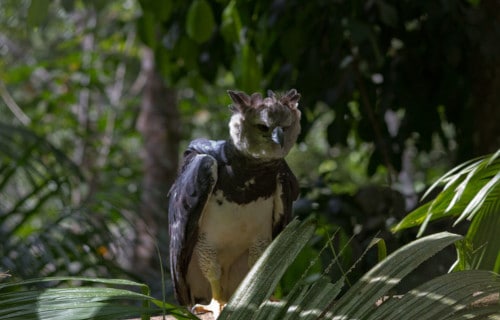

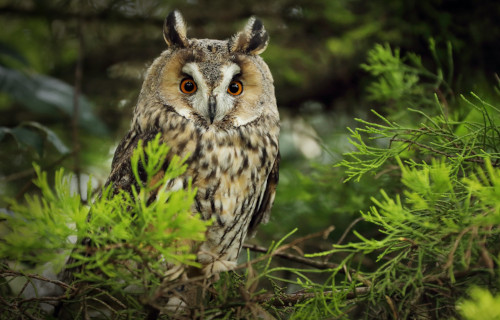
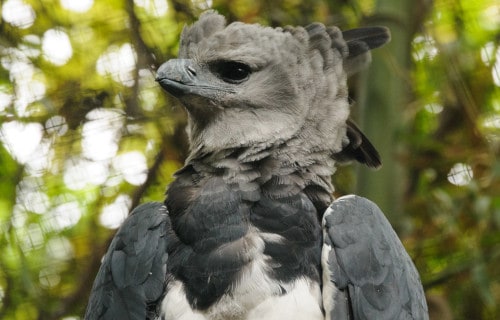
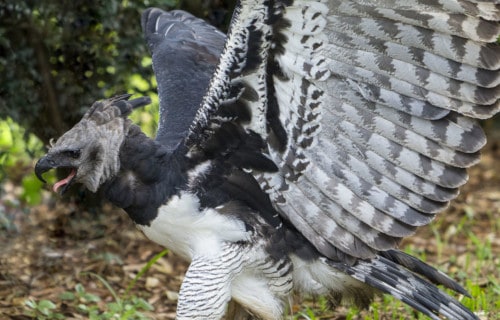

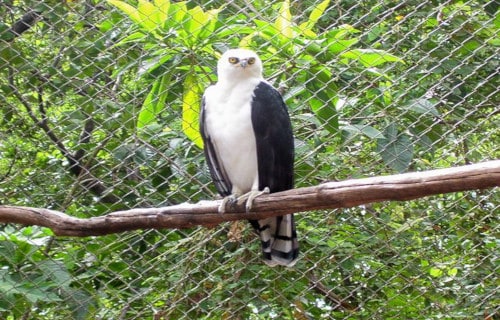
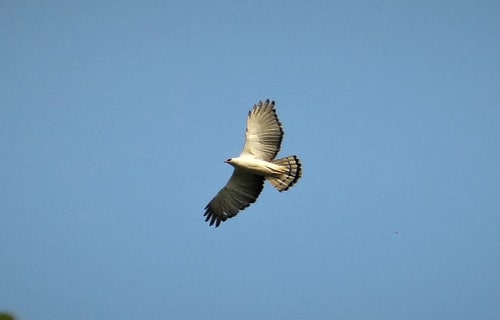









Leave a Reply